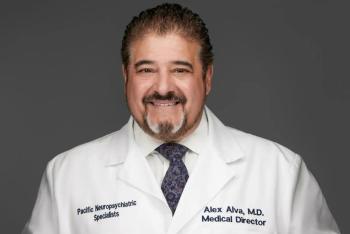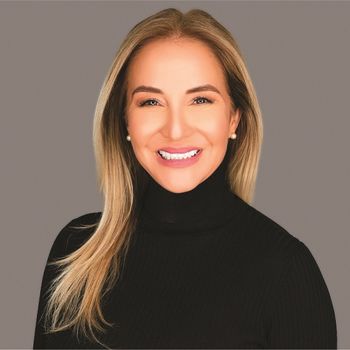
Making Telepsychiatry Work for You and Your Patients
How can telepsychiatry improve quality and access to care as well as reduce physician burnout? Telepsychiatry pioneers
How can telepsychiatry improve quality and access to care as well as reduce physician burnout? Telepsychiatry pioneers Peter Yellowlees, MMBS, MD, Chief Wellness Officer at UC Davis Health and Professor of General Psychiatry at the University of California, and Jay Shore, MD, MPH, Professor at the Department of Psychiatry and Family Medicine at Colorado School of Public Health, joined moderator Chris Aiken, MD, Director of the Mood Treatment Center and Psychiatric Times Section Editor for Bipolar Disorder, to discuss tips and tricks in making telepsychiatry work in this era of COVID and beyond. The webinar, which was recorded live on May 18, 2020, is available online at
Tools of the trade
Yellowlees, who has authored more than 80 articles on telepsychiatry and health informatics, has been conducting telemedicine since 1991. Recognizing the need to address mental health in more rural areas, his first session was with an Aboriginal women with depression in a distant part of Australia. Since then, he has refined his approach and gained much experience. In 2009, he was the lead author on the telemental health guidelines published by the American Telemedicine Association; he is a Fellow and Past President of the
Although there are a number of things that can make telepsychiatry easier for the clinician, Yellowlees said a clinician could easily get a good setup for about $200. A noiseless keyboard, for example, will make it easier to take notes during a session without disrupting the flow of the conversation. This, in turn, makes post-appointment paperwork quicker and easier. Similarly, an echo-cancelling microphone improves audio quality-it can be easily connected to a desktop computer and eliminates the need for headphones. Throw in a camera, and you are good to go. Even simpler, forgo the desktop computer for a laptop or a tablet, which has a built in camera and speakers.
Yellowlees also likes to use multiple screens during telepsychiatry sessions. “I have one screen for the video, I have another screen to the EMR, and I typically have my email or something else going on the third screen,” he explained. “And it’s actually less tiring to have two or three screens, because you don’t have to constantly change the picture, or change the shape of your screen as you’re doing different functions; you literally use each screen for a different function. And that’s a much, much easier way of working.”
According to Yellowlees, clinicians often overlook things like proper lighting and video presentation issues. He suggested havinf a light overhead, almost directed between you and the camera screen, and to avoid having too much light behind you to avoid shadows. Always check to see that you are centered properly, with your head about two-thirds of the way up the screen. “You don’t want your eyes to be far away from the actual camera,” he explained. Since the camera is a few inches above the eyes, this placement allows the clinician to make “eye contact” with the patient in a more natural way.
Choosing an appropriate telepsychiatry platform is also important. Despite the flexibility being afforded to health care providers during COVID, both Shore and Yellowlees noted it is best to use platforms that are HIPAA-compliant. “You know, the government can easily change the rules and decide they want to come and prosecute people [for not being HIPAA-compliant]. They really haven’t changed the HIPAA rules at all; they’ve just decided that they weren’t going to prosecute.”
In addition, picking the best platform right off the bat will allow for a seamless transition in a post-COVID world. Just as it may take time for clinicians to learn new platforms, patients may have a similar adjustment period. Since the rules will likely change after the COVID crisis, they added, it makes sense to acclimate your patients to something you can use moving forward. Fortunately, there are a number of user-friendly platforms from which to choose (
Billing, reimbursement, and insurance
Not surprisingly, many of the attendees’ questions surrounded reimbursement issues. Also not surprisingly, Shore, who also got his start in telemedicine to treat patients in rural areas noted the situation is complex, as insurance companies may have their own set of rules and CPT codes. Shore currently serves as the Director of Telemedicine Programming for the Department of Psychiatry, School of Medicine; as Director of Telemedicine for the Helen and Arthur E. Johnson Depression Center University of Colorado Anschutz Medical Campus; and as Chief Medical Officer of AccessCare, a provider of telemental health services of rural and underserved populations. As such, he is well aware of the intricacies of the reimbursement tango.
Shore reported that there is a loosening of requirements in the federal programs, including additional codes in Medicare and Medicaid. Yet, there have been weekly if not daily changes in coding, so he suggests clinicians check for specific directions on insurance company websites. Similarly, the American Psychiatric Association’s telepsychiatry page has many resources to help clinicians.
Certainly, as the COVID pandemic evolves, both Shore and Yellowless expect the reimbursement rules to change and evolve. Before the pandemic, Yellowlees routinely obtained prior authorization for telepsychiatry visits for each new patient. He noted this would be good practice moving forward for all clinicians to consider.
The missing pieces and the bonus pieces
All speakers agreed that telepsychiatry requires a degree of flexibility and creativity to make it work. For instance, psychiatrists should aim to be more animated during a telepsychiatry visit, Yellowlees noted. “Try to be lively and be reasonably friendly, you know, perhaps a bit more than you necessarily would in your own clinic. I normally say to people to be about 110% of normal-just slightly more lively, slightly more intonation in your voice. . . . And, that may be why some people also find telepsychiatry a little bit more tiring initially, because they’re actually having to speak and enunciate more loudly and more carefully.”
Similarly, clinicians may need to ask patients to be more creative. For example, clinicians can ask patients to weight themselves or use a blood pressure monitor during the video visit-many of the tools used to assess patients’ vital signs can be obtained inexpensively online. Patients with limited funds might be able to visit a local drug store to assess blood pressure and pulse readings.
Shore also had some suggestions for patients worried about their privacy. “One of the places that many of my colleagues and I have found useful is car therapy. When the car is not moving and the patient is not driving, it provides a private secure space,” he explained. “I actually have patients who park near places like a local library or health care center with good bandwidth . . . I have had patients park in front of their relatives’ houses and use their WiFi passwords.”
On the other hand, telepsychiatry opens up a world of possibilities. Yellowlees shared, “I’ll get them to deliberately use an iPad or a phone or mobile device, and I’ll have them show me around the house and walk me out in the garden. I’ll talk to them about their pictures or what they’re having for supper. I’ll get to see their pets, and potentially I’ll meet other members of the family-of course with appropriate discussion beforehand with a patient.”
This can be particularly helpful when doing therapy, Shore explained. “You’re doing [therapy] in this artificial environment, not in the environment where they live and they’re dealing with their symptoms. And so, I think there’s a real power to move the treatment into the place where the patient lives.”
Similarly, telepsychiatry also allows for greater insights and ability to help patients with specific disorders. For instance, if you’re working with someone with ADHD, you can see the state of their homes. In patients with eating disorders, clinicians can ask to see the pantry to see what might tempt them. For patients with a hoarding disorder, you can monitor their progress and watch as they sort through things.
Other special patient populations can also benefit from telepsychiatry. The most obvious group includes older and immunosuppressed patients during the COVID environment, who benefit from care that does not endanger their lives. Telepsychiatry also evens out the playing field and provides a more egalitarian approach. Patients with anxiety can meet with their physician in a more comfortable environment, which in turn allows them to share more freely. It also benefits children and adolescents, Aiken added. “It can be intimidating to be in an older doctor’s office when you’re an adolescent. In telepsychiatry, we are on their media-this is their domain, the electronic media, so they take it and run with it.”
Looking to the future-a hybrid approach
According to the experts, the literature to date suggests very high levels of patient satisfaction, most likely due to its flexibility. It becomes easier for patients to show up for appointments, with minimal disruptions to their schedule.
The flexibility goes both ways. In the past, taking an extended vacation or attending a convention meant leaving your patients behind, finding coverage, and the like. With telepsychiatry, clinicians can schedule appointments around their travel schedules, appointments, and leisure time and still be able to monitor their patients.
Another perk of telepsychiatry is that patients may find it easier to divulge sensitive information. “There’s a big computer science literature showing that people tend to be more honest if they’re talking about sensitive topics to a computer, filling in a questionnaire, or to someone on video on a computer as opposed to in person,” Yellowlees said. “Imagine if you’re a female and you’ve been raped recently. It’s much easier to talk to someone like Jay or myself on video than to come into our clinics and see us there as sort of physically large males.”
With greater opportunities to connect with patients and high levels of patient satisfaction, all three experts agreed the future of psychiatry should consist of a hybrid model of care. Aiken noted, “As we emerge [from this pandemic], psychiatry will have this tremendous opportunity to figure out the right balance [of telepsychiatry and in-person care].” This balanced hybrid approach should really be the standard of care, he added.
“I tend to look at it like video and in-person visits, each has their own strengths and challenges, and it’s variable by the patient population,” Shore explained. “As Peter [Yellowlees] mentioned, I’ve worked with victims of domestic violence and see them first in video to establish a relationship where they feel safer and more comfortable. Now, there are other patients where you may want to see them in person first to establish the relationship, and then do video.”
“What I’m hearing is that in the hybrid model patients might feel more secure in their connection with us, knowing that they can reach us when they’re at the beach, when their car is broken,” Aiken said. “We just have to turn it up a bit, 110%, in our own attunement and energy involvement, and we can actually connect to patients in different ways.”
Telepsychiatry Resources
Further reading
Yellowlees P, Shore JH. Telepsychiatry and Health Technologies: A Guide for Mental Health Professionals. American Psychiatric Association Publishing; 2018.
Newsletter
Receive trusted psychiatric news, expert analysis, and clinical insights — subscribe today to support your practice and your patients.

















